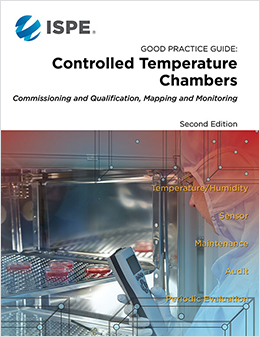Good Practice Guide: Controlled Temperature Chambers 2nd Edition

Published: December 2021
Pages: 134
With the increasing complexity of global distribution for medicines requiring controlled temperatures, the ISPE Good Practice Guide: Controlled Temperature Chambers – Commissioning and Qualification, Mapping and Monitoring (Second Edition) provides guidance on the lifecycle management of GMP controlled temperature chambers from creating a user requirements document to decommissioning a unit.
The controlled temperature chambers discussed in this Guide range from purchased commercial off-the-shelf items such as freezers and refrigerated delivery vehicles, to walk-in cold rooms and walk-in freezers, to custom-built units such as warehouses. The risk-based approaches covered include commissioning, temperature mapping, and periodic review, along with examples and sample templates.
The Guide has been revised to align with current industry practice, particularly with respect to the ISPE Baseline® Guide: Commissioning and Qualification (Second Edition), presenting a cost-effective way of demonstrating and maintaining compliance. The most significant changes are:
- Improvements to the commissioning and qualification activities resulting in more efficient processes
- Determining the periodic review frequency based on risk of failure to maintain uniform temperature and criticality of product stored
Additional revisions include:
- Expansion of freezer types to add ultra-low freezers and duration of storage needs
- Discussion on how materials of construction may impact cold rooms
- GxP storage facilities and warehouses descriptions
- Enhanced descriptions of monitoring systems
- High-level overview of decommissioning a unit
- Considerations for using ocean reefers (air-conditioned containers)
The paper, Determining the Uncertainties Associated with Mapping, from the National Standards Authority of Ireland/National Metrology Laboratory (NSAI/NML) (Adobe PDF 599 KB), is being provided to accompany this Guide.
Guide Core Team
For the full list of contributors to this Guide see Guidance Document Teams










